Get Real About The Future of Cryptozoology, Brah!!
Posted by: Loren Coleman on September 21st, 2012
I am disappointed to see the essay posted by Nick Redfern for it is so obviously not about the future of cryptozoology. I wish I didn’t have to take the time to answer this one, point by point. But here goes.
Hey, Bro, I am not worried about the future of cryptozoology.
Nick’s essay is here, and also mentioned on a recent Cryptomundo posting. However, I’m going to quote from it extensively, to make my points and answer it directly.
“Within cryptozoology, there’s plenty to look for and find, but what actual successes have been made? Have any successes been made, or is just the case that we have a lot of reports? And, yes there is a difference, a big one: a pile of papers, stacks of files, and a tidy number of thumb-drives do not equate to answers or proof.”
Okay, to apparently win his argument from the start, Nick appears to set up an argument by defining cryptozoology in a way that ignores the discoveries that have been made. This is a technique I noticed from zoologists and naturalists in the 1960s, as a way to challenge cryptozoology by ignoring past successes and always ask, “But what of the Bigfoot, Yeti, or Nessie, the celebrity cryptids?,” they would ask.
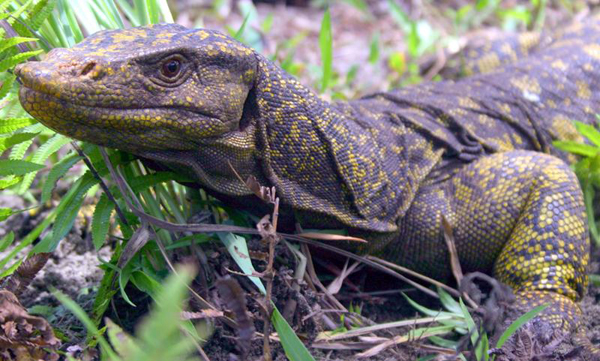
You see, if you ignore the fact that animals are found all the time that have, by definition, been historically cryptids, then you have created a difficult wall to climb. Look, reports of a cryptid, a giant lizard said to be climbing trees in the Philippines was discussed by natives but not investigated by scientists until 2003. How could the biologists missed it until verified in 2010? It is brightly and beautifully colored with intricate golden spots running down its otherwise black back, and climbs trees to eat fruit. But the lizard was new to science even though the local tribespeople – the Agta and Ilongot – knew about it for centuries. Their name for the giant monitor, bitatawa, is now part of its official species name – Varanus bitatawa. The same can be said for so many discoveries, I don’t want to bore the frequent readers here. But you know the list, peppered with former cryptids that turned out to be what today we known as the giant squid, the okapi, the mountain gorilla, the soala, the snub-nosed monkey, and more.
All were known by natives, found by westerners, and confirmed as “new species.” There have always been “a lot of reports,” but some, of course, do result in the finds of real animals.
Next Nick says: “In terms of securing hard evidence (and, no: film-footage, testimony, and photos – as good as they may be – are not evidence either) that very much depends on how you, me, or anyone else in the cryptozoological community views the many and varied cryptids of our world. It’s no secret that many people in the creature-seeking arena respond to my opinions on cryptids with (in varying degrees…) hostile eyes, rolling eyes, shaking heads, and waving hands of dismissal. Yep, like all mysteries throughout the entirety of human history, personal beliefs provoke emotion-driven responses of an utterly arms-folded, defensive nature. Hell, I don’t care though. I tell it as I see it, like it or don’t like it.”
Here again, if you throw out decades of hard work, all levels of evidence (from film, photos, native sightings, to DNA, footprints, and bodies) that has been found leading to the confirmation of decades of new species, the bread and butter of cryptozoology, then, of course, you win the argument. But since when has footprints not been “hard evidence”? Or feathers? Or skulls? Or bushmeat bodies or pet trade captures? I’m not sure what Nick is ignoring about all the rats, birds, lizards, crayfish, monkeys, and so much more that have gone from sightings to evidence to verification of new species that he has missed, but he seems like a lot.
Next we get to a big burr that seems under Nick’s saddle: “Let’s start with the that huge hairy thing of the woods: I’m totally fine and utterly confident in telling people that if Bigfoot is just a giant ape and nothing else I’ll eat my hat (well, I would if I had one). But, the fact of the matter is that Bigfoot is deeply weird. Too weird. Beyond weird. Got it?”
Nick has now jumped from factual evidence of a cryptid, Bigfoot, to challenging a theory, that it is an ape. This is different that arguing about the evidence. This is Nick challenging a world view that’s different than his. For some reason, unknown to me, he is sure that Bigfoot is not a physical entity, and is willing to digest your Indiana Jones hat if he’s wrong. Well, last I knew, Bigfoot are still cryptids, and no one knows what they are.
Ufologist Redfern now ventures into another sphere: “There are cases of Bigfoot vanishing in a flash of light, of cameras jamming at the crucial moment, and of Sasquatch seen at the same time and place as UFO activity. And let’s not forget those occasions when gun-toting Sasquatch-seekers, or terrified witnesses, claim to have shot at Bigfoot, only for the bullets never to kill it. Not even once. Or, even if such a claim is made, the corpse never surfaces or is always steeped in controversy (remember the Minnesota Iceman?).”
If you take the remarkably rare examples that Nick has to prove that Sasquatch are interdimensional or ufological or demonological, then you can take likewise sparse case histories to prove Bigfoot are human, can teleport, can read your mind by telepathy, have language, and a host of other wild claims. The boring middle range of cases, however, are the more frequent, and right now, all we seem to know is that something big, hairy, and unknown seems to exist or not exist out in the woods. For some reason, when a person like Nick talks of reports of Bigfoot disappearing in flashes or seen around UFOs, these are “cases” (even though they are .001% of the total) but the ones of hairy hominoids being captured and examined, or shoot at and killed are, all of a sudden, merely “claims.” Nick needs to re-read the literature to understand that while some have said their bullets have not seemed to have killed a Bigfoot, there are just as many accounts of people who have said they have shoot and killed Bigfoot type creatures (back to 1839, in fact).
Next from Nick, “‘Biggie’ has been reported all across the USA for decades (or maybe, as a study of Native American history and lore suggests, even hundreds of years), so why don’t we have at least one specimen – living or dead in our possession? It’s not like we’re talking about an unidentified type of 2-inch-wide spider that hides in the undergrowth. We’re talking about 6-9-foot-tall (maybe even bigger!) apes living all across the United States of America, and in some cases very close to big cities.”
Well, there’s a simple answer for that: Because they haven’t been discovered yet. Humans didn’t fly until they flew. Steam on the stove wasn’t turned into ships until it was steam-engine time. Nick forgets, as do most debunking scientists, that a big hairy beast wasn’t found in Africa until it was – in 1902 – and today we call it the mountain gorilla (Gorilla beringei).
As to the big city business, well, that’s okay. Nick can frame his debate in a silly assumption to win that one, and I need not address it.
Next Nick throws in Forteana to distract us: “The same goes for lake-monsters. Let’s use Loch Ness, Scotland as an example. Some say the creatures are plesiosaurs, others say huge eels, and then there’s the theory they are giant salamanders. But, the fact is that Loch Ness is steeped in additional weirdness: Aleister Crowley had a home there (Boleskine House – later owned by Led Zeppelin guitarist, Jimmy Page), and tried, while in residence, to conjure up demons. He may very well have succeeded. Moving on from Crowley, big cats have been seen prowling around the shores. Men in Black sightings and UFO encounters abound. And the loch has a resident ghost from the Second World War.”
Yeah, what happened to the more logical theory that ice-cold lakes might be occupied by warm-bloodied mammals (large ancient whales and long-necked seals) versus 65 million year old surviving plesiosaurs?

As to Aleister Crowley, MIBs, and UFOs, well, Erik Beckjord found that such things really don’t “explain” anything, and certainly do muddy the waters of Loch Ness. Do you really want to travel down that road and say it has anything to diminish the future of what most people consider to be legit cryptozoology?
“Loch Ness, then, is saturated with Fortean activity and phenomena, which has, quite reasonably, given rise to the theory that – as with Bigfoot – lake-monsters may be even stranger than mere flesh and blood animals. The same can be said for Mothman, for the Chupacabras, for sea-serpents, for…well, you see what I’m saying, right?”
No, Nick, I don’t really see what you are saying. Look, I’m a Fortean too. But as Ivan T. Sanderson taught me, “Don’t try to explain one unknown with another unknown.” You are no longer talking about cryptozoology here.
Nick writes: “It’s simply not enough for cryptozoologists to say words to the effect of: ‘Well, these things are very good at hiding from us.’ And here’s why it’s not enough: to accept that answer, we have to accept that Bigfoot (and all the rest) have – on every single occasion in the history of their existence – ensured that we never, ever get our hands on a corpse or a living specimen.”
Well, that’s not what I’m saying. I’m saying you are ignoring that volumes of scientific articles and zoo full of animals have been proven that some cryptids have been discovered by getting our hands on bodies and captured specimens. You not looking as this leaves you only an empty excuse that “paranormal entities” or “aliens” are the only viable answer. But animals are good avoiding humans – UNTIL WE DO FIND THEM.
Nick, Nick, Nick: “No large animals on the planet are totally successful at denying their existence to us every minute of every day, of every week, of every year, of every decade…except for cryptids. That should tell us all something. But, amazingly, for many, it often doesn’t!”
Why do you insist on not realizing that you are creating an argument you always will win? Naturally, a cryptid is a reported something that has not been proven to exist yet, or shown to be a known animal misidentified, or revealed to be a mistake, or discovered to be a new species, or found to be an extinct species rediscovered, or continues to be something that is still elusive to us. If and when it is discovered and verified, it is successfully found, and thus is no longer a “cryptid,” so, of course, it is only the cryptids that remain to as yet be found. It is a circular argument.
Nick: “To go with the strictly flesh-and -blood angle, we also have to accept that these beasts don’t make mistakes, such as getting hit by a truck while crossing a dark road in the woods late one night, getting shot by a hunter, or dying of old age and being stumbled on by someone out in the woods.”
Again, this is simply not truth. Things that use to be “cryptids” and are animals today are so because they were killed, almost eaten, captured as pets, or found dead on a trail. What are you missing in this?
I’m getting tired of this. I’m going to jump to Nick’s core thought or theme here. This is the point of what Nick is trying to point to, apparently:
“Cryptozoology needs a shot of alternative, deeply Fortean thinking to succeed and to prove it’s not wasting its time, because a shot from the rifle of a hunter has never worked and clearly – by now – never will. We need to know why. The future awaits. It’s the choice of the crypto-field to grab that future by the horns or not.”
The elusiveness of the animals yet to be discovered – and once again, if it wasn’t for a rifle killing one, we won’t know of the mountain gorilla – will remain elusiveness until they are discovered. Folks, Fortean friends and debunkers – are welcome to their paranormal “alternative” theories or psychological explanations, but that’s no reason to diminish the solid and sound biological thinking upon which most of the zoologically-based cryptozoology is based.
In the framing of cryptozoology “never” discovering things they have written about, I’m republishing parts of the following that discusses items Heuvelmans wrote about that turned out to be “discovered.”
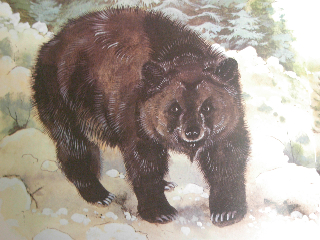
The nature of animals being “ethnoknown,” realized and acknowledged by local peoples, is essential to a clear understanding of what is a cryptid. (Please recall, by definition, a “cryptid” may turn out to be a known animal. Sometimes an ethnoknown cryptid that seems to look like a moose is nothing more than a moose.)

For some cryptozoologists, such as Chad Arment, being “ethnoknown” is pivotal to their view of cryptozoology.
Arment defined (here in 2007) cryptozoology as “a scientific ethnoknown-targeted methodology for zoological discovery.”
Furthermore, in his steps to achieving this practice, in the methods of the new science, he notes that cryptozoology “targets ethnoknown species. These are alleged animals with enough salience (observable characteristics) to be recognized as something distinctive or unknown, either by a native people group, or chance eyewitnesses. In some cases, a cryptid may be well-known, or may only have been reported a handful of times.”
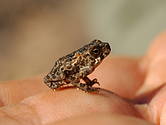
Michel Raynal, looking at the limits of what concerns cryptozoology, touched on the issue of “ethnoknown,” when he wrote that,
As the size is not a criterium to state what is cryptozoological and what is not, Bauer and Russell (1988) have thus suggested an intensive research in what they call “microcryptozoology”, that is to say the search for little unidentified animals, but Dethier and Dethier-Sakamoto (1988) noticed:
“We entirely agree with Bauer and Russell when they point out the importance of searching for small and discrete unknown animals. If they are not ethnoknown, however, they are, of course, outside the scope of cryptozoology.”
This statement, though often true, is not an absolute rule. The definition of cryptozoology by Heuvelmans (1988) is much less restrictive:
“The scientific study of hidden animals, i.e. of still unknown animal forms about which only testimonial and circumstancial evidence is available, or material evidence considered insufficient by some.”
As a consequence, a cryptozoological research is still possible when no observation or native tradition is available: any information based on circumstancial evidence, allowing to forsee the existence of an unknown animal form, is relevant to cryptozoology.

Just to round out the cryptozoological use of the word “ethnoknown,” let me quote Darren Naish from his 2006 discussion of the discovery of the the Highland mangabey (Lophocebus kipunji). Observe how Darren used “ethnoknown,” in context:
The story of the Highland mangabey’s discovery is an interesting one. In January 2003 Tim Davenport of the Tanzanian Wildlife Conservation Society ‘heard rumours [from the local Wanyakyusa people of the Mount Rungwe region] about a shy and atypical monkey known as Kipunji’ (Beckman 2005, Jones et al. 2005, p. 1161), and became interesting in tracking down the species that might lay at the bottom of these reports. Meanwhile, another primatologist – Trevor Jones – had been amazed to observe an unusual, unidentifiable monkey in the Tanzanian Ndundulu Forest Reserve, a location about 350 km away from the source of the Kipunji reports.
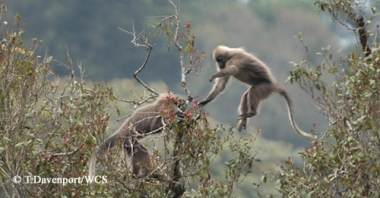
So, at this stage, we have an ethnoknown primate known only to scientists by way of fleeting observations. This makes the Kipunji a bona fide cryptid, and, to repeat a point I’ve made before (in connection with the Odedi, a cryptic warbler from Bougainville Island), one would be justified in arguing that Davenport, Wood and their colleagues were now engaging in cryptozoological research. By definition these primatologists are therefore part-time cryptozoologists, whether they like it or not.
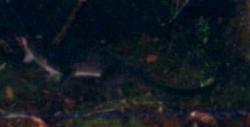
Like Arment, Raynal, and Naish, I too have employed the word “ethnoknown” (here’s an example from 2005) frequently, in terms of analyzing cases or in the context of the size of cryptids.
I’ve hear this one too: “Despite all the discoveries of the past half-century, not one of Bernard Huevelmans’ cryptids has turned up.”
This claim is widely repeated and recycled by opponents of cryptozoology, but also by some cryptozoologists (or bloggers and writers identifying themselves as “cryptozoologists”) — however, it is false.
Of course, the Big 3 + 1, the “stars” of cryptozoology (i.e. Yeti/Abominable Snowman, Bigfoot/Sasquatch, and Nessie/Loch Ness Monster, plus the historically fading Sea Serpent) have not been discovered since Bernard Heuvelmans wrote his famed book, On the Track of Unknown Animals. Despite the notion that these umbrella names often may hide several possible species, it is true, the celebrity cryptids have not been discovered.
But, of course, since Heuvelmans book was first written in 1955, in French, many new animals, entirely new species that were former cryptids have been discovered, in the last 53 years. That is not what these critics are talking about, however. The yardstick being used by these antagonists has been, very specifically, Heuvelmans’ book. Ironically, the skeptics are the ones who have given his tome almost biblical status despite the fact Heuvelmans was merely one of the better known milestone cryptozoological chroniclers. Earlier writers and contemporaries of Heuvelmans authored literary collections on cryptids, including Ivan Sanderson, Willy Ley, A. C. Oudemans, Rupert T. Gould, and others. These individuals are often ignored in pushing this post-Heuvelmans’ standard of discovery.
Therefore, let us survey this test case of whether any lesser famous “cryptids” listed by Heuvelmans in 1955 have been found. What we quickly discover is that within the text of Heuvelmans, we do find cryptids that have since been confirmed by specimens and related verifications.
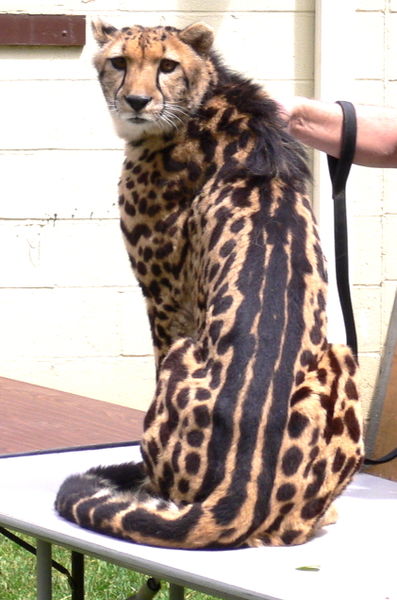
1) The nsui-fisi or king cheetah, a controversial species of East African felid was described as Acinonyx rex in 1927, and has since been confirmed by several skins and even living specimens. It is generally considered a simple genetic mutation of the common cheetah (A. jubatus), but there are good reasons to think that it might be a subspecies in the making or in actuality. Could it one day be said to be a separate species entirely, with clearer genetic testing?
Bottriel, Lena Godsall 1987 King cheetah. Leiden, E.J. Brill.
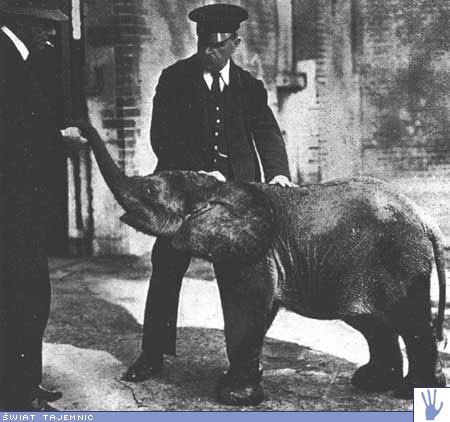
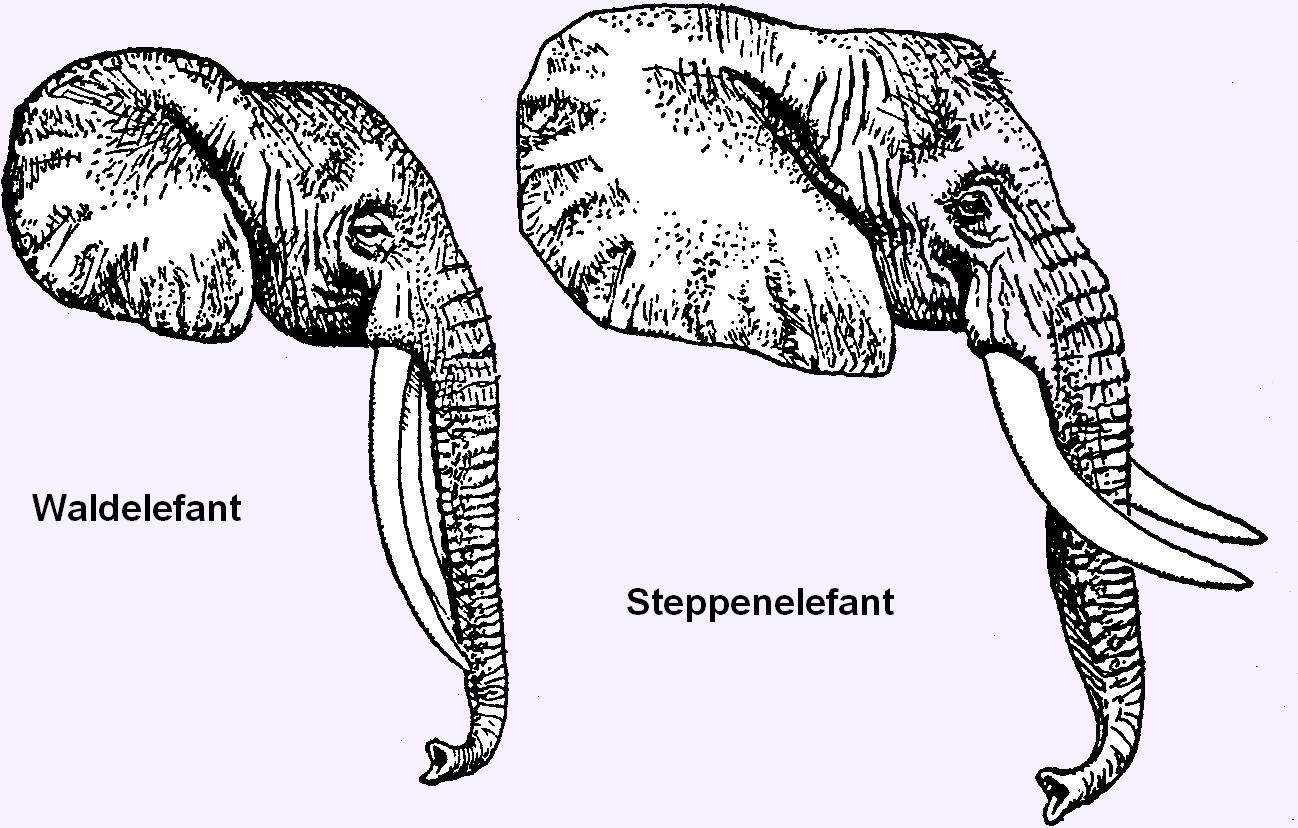

2) The controversial Pygmy Elephant (Loxodonta pumilio) of Africa has been confirmed by film/video footage and photographs of entire herds of the species as requested by its opponents. These individuals now say that it is an unknown behavior or morph of the forest elephant, thus, as expressed firmly in personal communication to me by Michel Raynal, this “demonstrates that no evidence will be accepted by these ultra-skeptics.”
Pygmy Elephants are today reported to be living in both Africa and Asia.
The African Pygmy Elephant, described as Loxodonta pumilio, is currently considered to be a tiny morph of the African Forest Elephants (L. cyclotis); see Debruyne et al. (2003). But even the DNA studies are less than clear, and the groupings and photographs of the small elephants appear to confirm that the species is valid.
The Borneo Elephant (Elephas maximus borneensis) is also called a “Pygmy Elephant.” This elephant, inhabiting tropical rainforest in north Borneo (east Sabah and extreme north Kalimantan), was long thought to be identical to the Asian Elephant and descended from a captive population. In 2003, DNA comparison revealed them to be a new subspecies. In Augut 2007, it was reported that there are probably not more than 1,000 pygmy elephants left in Sabah, after a two year study by WWF.

Further discussions are now mentioning the cryptid status of the Pygmy Elephants of India. Kani tribals dwelling in the rain forests of the Western Ghats, Kerala, India, claim that there are two distinct varieties of elephants in the Peppara forest range (part of Western Ghat), one the common Indian elephants and the other a dwarf variety which they call “Kallana.” The existence of a pygmy variety of elephant in India has not been scientifically ascertained.
Eisentraut, Martin, und Wolfgang Böhme 1989 “Gibt es zwei Elefantenarten in Afrika?” Zeitschrift des Kölner Zoo, 32 [n° 2] : 61-68.
Debruyne, R., Holt, A. van, Barriel, V. & Tassy, P. 2003. “Status of the so-called African pygmy elephant (Loxodonta pumilio (NOACK 1906)): phylogeny of cytochrome b and mitochondrial control region sequences.” Comptes Rendus de Biologie 326(7):687-697.
Böhme, Wolfgang, und Martin Eisentraut 1990 “Zur weiteren Dokumentation des Zwergelefanten (Loxodonta pumilio NOACK, 1906).” Zeitschrift des Kölner Zoo, 33 [n° 4] : 153-158.


3) The late survival of a controversial bear in Northern Africa, the so-called Atlas Bear (Ursus crowtheri) – pictured at the top of this posting – up to historical times (see ancient drawings directly above), has now been confirmed by radiocarbon dates at 420 to 600 AD.
Hamdine, Watik, Michel Thevenot, et Jacques Michaux 1998 “Histoire récente de l’ours brun au Maghreb.” Comptes-Rendus de l’Académie des Sciences, sciences de la vie, 321 : 565-570.
Tretretretre
4) The last survival of a Giant Lemur (the native termed tretretretre) in Madagascar, up to historical times, has been confirmed by radiocarbon datings of Palaeopropithecus ingens bones at only 510 years BP (approx. 1500 AD).
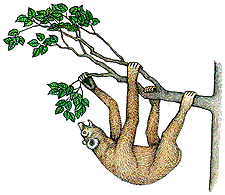
Palaeopropithecus
Simons, Elwyn L. 1997 “Lemurs: Old and New.” In Steven M. Goodman and Bruce D. Patterson: “Natural change and human impact in Madagascar,” Washington, Smithsonian Institution Press: 142-166.
The record shows that there are, at least, four cryptids from Heuvelmans’s 1955 book, which have proven to be valid!
Much appreciation to French cryptozoologist Michel Raynal for contributing extensively to this article. Thanks to Matt Bille for his assistance with bear images. Thanks to Patrick Huyghe for pygmy elephant material.
Also, as John Kirk wrote in August 2008:
From day one, cryptozoology has been the province of those who are scientifically inclined. In my years of dealings with the father of cryptozoology, the late Dr. Bernard Heuvelmans, the father of Cryptozoology, never did I hear or read him say that cryptozoology was anything but scientific and he personally reminded me to “at all times remember to keep it scientific.” Similarly, when the International Society of Cryptozoology was founded in 1982, the focus was and has always been scientific and nothing less. Who was at the forefront of the ISC? Why scientists of course. Conspicuous by their absence were and are those who espouse any theory than the scientific for the raison d’etre for cryptids. Is this because cryptozoologically-inclined scientists deliberately want to exclude people? The answer is a categorical no. Those who do not follow the scientific method of something that is so blatantly scientific are excluding themselves from meaningful and realistic dialogue because they attempt to take something so natural into the realm of the unnatural.
Along the path of the cryptozoological journey, there are those who have attempted to hijack cryptids into the realm of the paranormal. Suffice it so say, the animals they are searching for are not the ones I am studying. All the animals I investigate are indeed mysterious and unknown, but one thing about them that is common throughout is that they are animals and all adhere to the laws of biology, zoology and science. None of the animals that I have ever investigated have shown any remote inkling that they have any powers or capabilities that some have ascribed to them that make them more than flesh and blood entities.
While paranormal investigators can try to find paranormal traits about these animals, I do not believe in the least that there is anything supernatural or extraordinary about them. They behave in accordance with all that we know about the real world and of science and nature and not in anyway associated with the realm of conjecture and speculation. Cryptozoology has and always relied upon the production of empirical evidence to prove or disprove the existence of cryptids. Nothing less will do. At some stage, a body must be obtained. In the case of Cadborosaurus willsi, there have been four specimens obtained of a cryptid. Regrettably, all four were lost, but they were in hand and clearly real entities of a physical nature as they were held, touched, examined and in one case had tissue removed. In not one instance did any of the people who possessed these animals report anything more than what was expected from an organic animal.
Again, for those who really understand what cryptozoology is, there is no need to worry about its future.
About Loren Coleman
Loren Coleman is one of the world’s leading cryptozoologists, some say “the” leading living cryptozoologist. Certainly, he is acknowledged as the current living American researcher and writer who has most popularized cryptozoology in the late 20th and early 21st centuries.
Starting his fieldwork and investigations in 1960, after traveling and trekking extensively in pursuit of cryptozoological mysteries, Coleman began writing to share his experiences in 1969. An honorary member of Ivan T. Sanderson’s Society for the Investigation of the Unexplained in the 1970s, Coleman has been bestowed with similar honorary memberships of the North Idaho College Cryptozoology Club in 1983, and in subsequent years, that of the British Columbia Scientific Cryptozoology Club, CryptoSafari International, and other international organizations. He was also a Life Member and Benefactor of the International Society of Cryptozoology (now-defunct).
Loren Coleman’s daily blog, as a member of the Cryptomundo Team, served as an ongoing avenue of communication for the ever-growing body of cryptozoo news from 2005 through 2013. He returned as an infrequent contributor beginning Halloween week of 2015.
Coleman is the founder in 2003, and current director of the International Cryptozoology Museum in Portland, Maine.










DWA
I would like to two examples to your statement here.
“Next time you see, say, a coyote or fox – animals that don’t show themselves a whole lot, but enough – just imagine no one believing you when you say you saw one”
One I lived in the country for a good 20 years, never saw a fox, and I did a great deal of nature walks and hiking. My parents who still live in the same place saw one fox, I’d say a few years back, so that’s a good thirty years. Animals who want to hide do.
Now about creatures bigger than a rat, there was a tribe of humans just discovered in South America in 2011.
Point is, large intelligent creatures can hide in dense forest.
Nothing supernatural about it, just the desire to avoid outsiders.
There is an amazing animal, possessing one of the deadliest weapons in the animal kingdom. It lives in some of the most densely populated portions of the globe, sometimes reaching over 5m in length and weighing in excess of 600 kilos. I’m sure many ‘scientists’ said something like this could not possibly exist, it was “discovered” only 20 years ago: M. chaophraya
Though in my own sphere of the Loch Ness Monster, I aim to take a rational and scientific line of enquiry, I am always open to other lines of enquiry such as the paranormal.
My own recent article on Tim Dinsdale being a firm believer in the paranormal yet trying to steer a “flesh and blood” route for the creature shows that two theories can be held in one worldview by a cryptozoologist (which I am sure Tim would have described himself as).
I used to take a paranormal view of Nessie, but a few years back I decided to go back to the “conventional” and see how far I could take it. So far I am still on course.
The question for me as a Loch Ness researcher is “how long do I give that paradigm”? How long does one keep searching before giving up on metaphorically hooking that 30 foot beast?
Clearly some in the Loch Ness cryptozoology domain have concluded the near 80 year elusiveness is purely down to the fact that there is nothing there except perhaps an itinerant sturgeon.
Does thinking Nessie is a sturgeon remove you from the field of cryptozoology? As one sturgeon advocate once said – Loch Ness has very little to do with cryptozoology.
I clearly do not agree with that statement.
My apologies… mistyped, it’s not “M.”… I was speaking of the giant freshwater stingray: Himantura chaophraya
In his book, ‘Jacobson’s Organ and The Remarkable Sense of Smell “, Lyall Watson talks of an animal that is similar to a skunk but instead utilizes pheromones… (I cant find my copy of the book, maybe someone can help out here with the name of the animal). Upon smelling it there is a loss of cognitive function and a strong feeling of aversion.
Was wondering if it’s ever been postulated that BF’s pheromones could have a similar pyschoactive effect/ component… could explain some of the supernatural type qualities attributed to it.
Loren, from time to time something so beautiful happens on the internet that one is compelled to dust off one’s username and password in order to comment. This is one of those things. You dunked on him so hard, man. *wipes away tears*
I’ve just skimmed the other comments so far, but in one I noticed Nick mentioning a lack of Bigfoot skeletons. I was recently in southern Indiana and was shown daylight CCTV snaps of a bobcat. The bobcat is now recognized by Indiana’s DNR as being present in low densities in this part of the state. However, how many Hoosiers will have come across an intact bobcat skeleton while out walking in the woods? Not many, if any. Nature doesn’t leave these things lying around for long.
(Yes, unlike with Bigfoot, we do have bobcat skeletons to study. But my point is about the likelihood of stumbling across the corpse or skeleton of an uncommon animal. It requires being in the right place at the right time, and this can’t be determined in advance.)
DWA said:
“Every sighting I am aware of is right on the boundary of, or in, a large contiguous tract of what would appear to be excellent habitat, or at least a viable travel corridor amenable to the passage of a large, solitary animal with reasonably good people-avoidance software (which most wild things have). ”
Yes. Prior to us visiting a witness and viewing some track casts, my husband plotted all online-available Indiana Bigfoot sightings on a map, and guess where most were? They were clustered in and around the one part of Indiana that is still covered in big chunks of forestland – Morgan Monroe State Forest and the Hoosier National Forest in the south-central part of the state (there are also smaller woodlands nearby, such as Brown County and McCormick’s Creek state parks).
So although the state as a whole is characterized by agricultural land, small towns, and some cities, BF sightings happen where you would expect them to happen if this is a forest-dwelling animal – in or near what forested areas remain.
RainbowMeow:
My experience in IL and IN is primarily driving on interstates.
FROM THAT ALONE, I can tell you that the popular perception of those states as A Wheatfield is way wrong. There is habitat, lots of it. Bears would love it…and they’re showing it.
And of course, something that is being seen – and in cases like this, reports can be bet upon to lag behind total encounters – isn’t, well, “never seen,” or “100% avoiding” anything.
(Indiana, 73 on the BFRO database; Illinois…187.)
DWA:
Re IN and IL habitat – absolutely. Where I’m from there are woods aplenty even though corn and soybean fields break them up. Hence the popularity of all kinds of hunting (including my own preference – mushroom hunting).
Also agreed re it being likely that reported sightings lag behind total sightings. The person we spoke to hadn’t ‘gone public’ until after retirement due to fear of any consequent ridicule affecting his career (which is a theme I’m sure you’ve heard before).